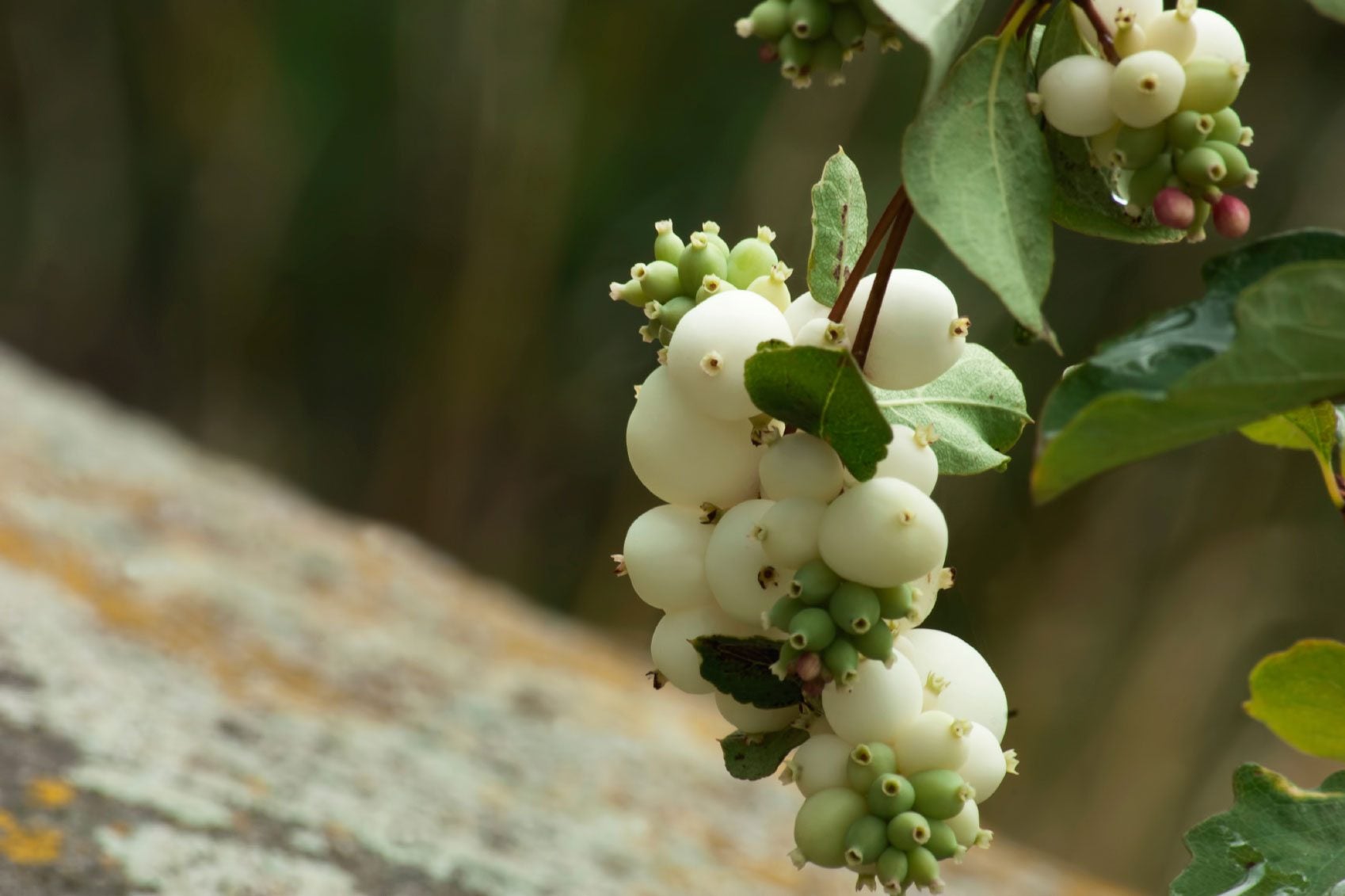Snowberry Bush Care: How To Grow Snowberry Shrubs


While common snowberry shrubs (Symphoricarpos albus) may not be the most beautiful or best-behaved shrubs in the garden, they have features that keep them interesting throughout most of the year. The shrub blooms in spring, with small but dense clusters of bell-shaped, white flowers at the ends of the branches. In fall, the flowers are replaced by clusters of white berries. The berries are the showiest feature of the shrub and last well into winter.
Where to Plant Snowberry Bushes
Plant snowberries in full sun or partial shade. The shrubs are found naturally along stream banks and in swampy thickets, but they thrive in dry areas as well. They tolerate a wide range of soil types, and while they prefer clay, they also grow well in sandy and rocky soils. Snowberries are rated for USDA plant hardiness zones 2 through 7. Snowberries are an asset in wildlife gardens where they provide food and shelter for birds and small mammals. Bees, butterflies, moths, and hummingbirds are attracted to the shrub. They also do well in exposed areas where they tolerate strong winds. Vigorous roots make the plants suitable for soil stabilization on hillsides and stream banks.
Snowberry Plant Info
Even though wildlife enjoys eating the fruit of the snowberry bush, it is poisonous to humans and should never be eaten. Some experts claim that you can eat the berries if you pick and cook them at just the right stage of maturity, but it's a risk not worth taking. Snowberry bush care is intensive because of the vigorous suckering and the numerous diseases that infect the plant. Anthracnose, powdery mildew, rusts, and rots are just a few of the problems that infest snowberries. Pulling up and cutting off suckers is a constant chore.
How to Grow Snowberry Shrubs
Snowberries grow about 3 feet (1 m.) tall and 6 feet (2 m.) wide, but you should plant them a little further apart. You'll need room for maintenance and space to allow good air circulation to help cut down on the incidence of disease. Keep the soil moist until the plant is established. Afterward, it tolerates dry spells. Common snowberry doesn't need annual fertilization but will appreciate an application of balanced fertilizer every other year or so. Prune regularly to remove diseased and damaged parts of the shrub. Where diseases like powdery mildew are serious problems, try to open up the shrub to allow better air circulation. Remove suckers as they appear.
Gardening tips, videos, info and more delivered right to your inbox!
Sign up for the Gardening Know How newsletter today and receive a free copy of our e-book "How to Grow Delicious Tomatoes".

Jackie Carroll has written over 500 articles for Gardening Know How on a wide range of topics.
-
 Looking For Plants To Give You The Soft And Fuzzies? Try These 5 Fuzzy Leaf Plant Options
Looking For Plants To Give You The Soft And Fuzzies? Try These 5 Fuzzy Leaf Plant OptionsLovers of texture, drama, silver foliage and tactile plants will adore these special sensory garden additions. These fuzzy leaf plant options will leave you all aglow
By Susan Albert
-
 Get Ready For A Summer Of Hummers! Grow These Full Sun Hummingbird Plants and Flowers
Get Ready For A Summer Of Hummers! Grow These Full Sun Hummingbird Plants and FlowersIf you’re lucky enough to enjoy a sunny backyard, make sure you are maxing out on your pollinator opportunities and grow these full sun hummingbird plants and flowers
By Tonya Barnett